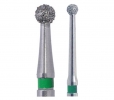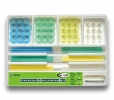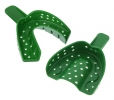BACKGROUND
Insufficient residual alveolar bone height is a common deterrent in the placement of dental implants in the posterior maxilla. The use of autografts, xenografts, allografts and alloplasts or a combination between them has been demonstrated to be effective for increasing bone height and bone volume in the deficient posterior maxilla
PURPOSE
The aim of this clinical trial is to comparatively determine the density of newly formed in sinus floor augmentation bone after a 24-week healing period treatment with a new bovine xenograft
MATERIALS AND METHODS
The sinus floor was grafted with Bio-Oss® (n = 10) and Osseous® (n = 10). Histological sections were examined with a focus on the presence of connective tissue (CT) and newly formed bone (NFB). The sections were histomorphometrically evaluated and the definitive crown was inserted after 3 months
RESULTS
After 6 months, the mean value of new bone formation was 24.60 (±2.503), the CT was 42.60 (±4.006) and the remaining biomaterial was 25.40 (±2.547) in Bio-Oss group. In Osseous group, the mean value of new bone formation was 24.90 (±3.542), the CT was 45.70 (±7.040) and the remaining biomaterial was 22.90 (±3.247)
CONCLUSIONS
Both biomaterials afforded a favorable implant position and the prosthetic rehabilitation
Source: 25535980 PubMed - in process
Publication date: 2015 Oct;17




